The State of Video Communications in Pharma
The video revolution
The video communication revolution is here for the pharmaceutical industry.
Stakeholders, including healthcare providers, salespeople, and end consumers, now interact with more video content than ever. Additionally, most functions outside of the lab can now be completed remotely by nearly everyone in the pharma industry.
That means in-person tasks, from sales calls to internal town halls to external panel sessions with clinicians, can and must be supported by reliable, interactive video tools.
The explosion of video communication
The pharmaceutical industry’s need for reliable, interactive video communication has never been greater.
Pharmaceutical marketing budgets shot up 15% in 2022. 80% of consumers prefer to watch live videos from a brand rather than read a blog, and 82% prefer a live stream over reading a social media post. Additionally, 88% of enterprise professionals expect their company’s video content output to increase in 2022.
These factors increase the industry’s need for reliable, interactive video tools. Not to mention that all video content must also be tailored to multiple stakeholders: internal employees, healthcare providers, doctors, clinicians, and patients. Further, leaders and executives will expect the use of tools that increase, measure and report the ROI of marketing-related investments.
In short? The pharmaceutical industry has a major need for effective video tools that can be used both internally and externally. Diving deeper, there are three key drivers behind this increased need for effective video communication tools, including:
- The digital transformation of the industry
- The massive shift to online work
- The boom of telehealth
Let’s explore each.
The digital transformation
To begin, the first major driver behind the pharma industry’s need for more effective video tooling is the rapid digital transformation that has impacted the industry.
Many industries transitioned to offering more digital services and experiences with relative ease. For example, low-stakes tasks like food delivery or clothing shopping were simpler to move online, and the impact of a mistake or sloppy service was more quickly remedied.
In particular, the healthcare and the pharmaceutical industry are entirely different stories.
Showcasing a new drug involves an intricate, complex web of stakeholders, including doctors, clinicians, regulators, and salespeople. Federal regulations govern how, when, and who consumes pharma video content. Video content must always maintain privacy and regulatory compliance.
Simply put, the pharma industry has unique and complex enterprise video needs, both externally and internally. This makes the industry’s need for reliable, interactive video tools greater than ever.
A hybrid world
Another reason for the urgent need for effective, reliable video communication within the pharma industry? In our new hybrid world, many are working from home or working remotely. As the shift to a more online world continues, colleagues can now work remotely all over the county and even the world – as long as there is access to reliable video communication tools.
Today, enterprise viewers and users demand picture-perfect video without buffering or lag, on par with the quality expected from streaming platforms. However, reliability is not the only requirement for enterprise video. In our new, hybrid world, viewers also demand interactivity and low latency.
As we all continue to transition into our new hybrid world, expect the need for more Live video, especially for internal communication within the pharmaceutical industry, to continue to spike.
The boom of telehealth and remote selling
Finally, one more driver behind the increased need for reliable, interactive, and attractive video communication within the pharma industry is the recent boom in telehealth and remote selling.
The healthcare industry had to rapidly embrace video communication out of necessity. Doctors, clinicians and other workers in the healthcare system are now more comfortable communicating over video than prior to the pandemic.
The need for more effective video comms tools has also increased with the advent of remote selling. In fact, video communication, whether recorded live or not, is highly effective at humanizing a drug manufacturer’s brand and generating trust between a pharma sales rep and a potential client.
The world continues to move online and digital, so remote selling will likely become the industry norm. And as practices like company wide internal comms to a hybrid workforce and remote selling to external stakeholders keep rising in importance, so will the pharma industry need to adopt the most effective video communication tools possible.
Learn more
The video communication revolution is here. Are you prepared?
To learn more about the impact of video in the pharmaceutical industry, download our free eBook:

